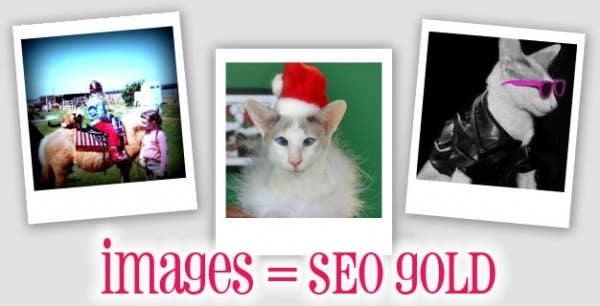
5 Reasons that Images are a SEO Goldmine
mousebreath.com
Most bloggers fail to take advantage of the SEO opportunities inherent in their images. Here's how you can squeeze out all of the available SEO juice from your images, and why you should seed your blog with images.
mousebreath.com
Most bloggers fail to take advantage of the SEO opportunities inherent in their images. Here's how you can squeeze all of the available SEO juice from your images, and why you should seed your blog with images.
We're nearly at the end of our SEO Bootcamp for Cat Bloggers, and today we're veering away from discussing the text in your posts, and show you how images can be a SEO goldmine for you.
Image (vs. text) searches have been uptrending, and there are five reasons that images are a SEO goldmine and can be used to improve your SEO results.
How to use images to improve your SEO results
Image Search -- not just Text Search -- results
One is to provide images in your posts so that they will come up in image search results. Text search is only one type of search that your readers might perform.
It says to Google: This content is relevant
The second is to use images as a means of reinforcing for Google that your content is relevant. If you leave your image fields (alt tags, description, caption, name) blank,
Incoming link source
Third, you can submit just the image to stumbleupon or image browsing sites to generate incoming links which will improve SEO. When you do, make sure you are hosting the image on your own site and not hotlinking.
Images increase pageviews and decrease bounce rate
Fourth, images will invite readers to explore more of your blog, increasing your pageviews and decreasing your bounce rate, signaling to Google that your blog is relevant.
Images provide a stash for juicy keywords
Last, images provide an important keyword stash. As we discussed earlier in our SEO Bootcamp, images offer a treasure trove of keyword/key phrase opportunities. Don't squander them.
Images are Bait
In addition, compelling images WILL make the difference when you propagate your content across the web, including social media sites. For example, when you post on Facebook or Stumbleupon, many readers click those links based on how compelling the image is. If you don't have an image, a huge number of potential readers, scanning for photos as their criterion for clicking through to a story, will skip right over.
How to get some of that image magic
Always use at least one image on every post. (Don't have an image? Go to Flickr and use an image offered under the creative commons license -- but don't forget to credit the photographer.)
Fill in all of the image attribute fields (alt tags, description, title caption, name). Few bloggers take the time to complete all of the image fields when uploading their images, so this provides an excellent way to get a leg -- or a paw -- up on the competition.
Complete the image attribute fields with search terms in mind. For example, if it's an image of your cat Fluffy, the cat's name may not be relevant as a search term. Instead, use keywords and phrases like "persian cat" "monorail cat" "cute sleeping cat." Get into the head of a potential reader: if they arrived at your blog from a search engine, what search terms were they likely to have used to get there?
Refer to a list of keywords from your Google analytics reports. That doesn't mean you have to limit yourself to these keywords, but it's the best place to start when determining which keywords to use. It's also great for keyword brainstorming sessions.
Delimit the keywords by dashes or underscores. Search engines can't parse a run-on of ten words. Make it easy for them.
In short, don't squander the SEO opportunities inherent in images. The minute or so that you spend optimizing your images for SEO will pay off tenfold down the road.
Don't miss other sessions from the Cat Bloggers' SEO Bootcamp:
Housecleaning for SEO Relevance

